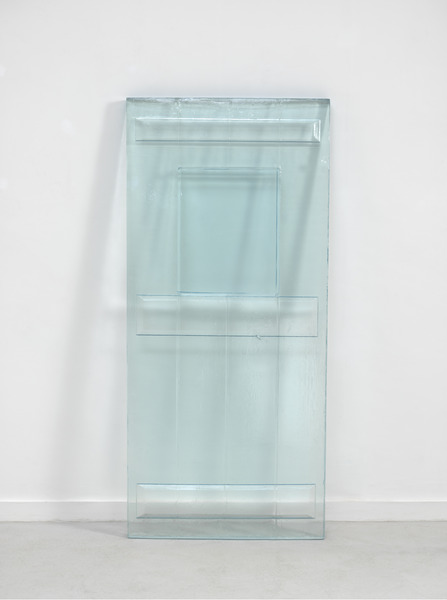Rarely does an artist invoke thoughts of Nothing like Rachel Whiteread (that’s capital N nothing, by the way – the greater idea of nothing, rather than nothing at all. The loudest negative silence within all possible comprehension, effectively; it is the kind of nothing that fills the silences in Pinter plays). Her famous House – made, some might be shocked to recall, in 1993, with the artist herself turning fifty this year – was a screaming grey-block slab of Nothing; her Judenplatz Holocaust Memorial, with its secondary title of Nameless Library, is the biggest Nothing to ever evoke – no doubt – a thousand heartfelt and doleful tears.
Nothing is on display, too, at the Gagosian. It is there in the shape of the usual leaden interior casts (this time, of sheds), but also – a different, less deadening kind of Nothing – in the resin pieces, which take the form of the husks of doors and windows; translucent rather than transparent, immobile and permanent, but barely moving, emotionally speaking. I thought, for a moment, of Roni Horn’s cylindrical resin pieces, with their equally baby-soft colouring, and their watery tops, and wondered how two forms so similar in their material makeup could be so wildly different in feeling. Horn's sculptures feel hopeful, almost; Whiteread's doors are doors which lead into Nowhere.

Rachel Whiteread, circa 1760 (II), 2012; © Rachel Whiteread / Courtesy Gagosian Gallery/ photo: Mike Bruce.
The name, Detached, is an appropriate one; this much, I’d suggest, is inarguable. The forms are detached from their original purpose, yes, but Whiteread’s general aura, too, is one of detachment – a sparse, utilitarian nod to craft. One wonders exactly how far Detached, as a title, sits from the far more common Untitled; both, after all, demonstrate a certain intentional distance, or wilful obtuseness. A work “untitled” is a non-statement statement, of sorts – it dares the viewer to project his or her own meaning, without providing a single definitive answer. This was the beauty of House: to a casual observer, it capably suggested whatever connotations each individual passerby might associate with the inside of such a space. It represented, approximately, everything and nothing (and Nothing). It added heft to those abstract notions of personal and public history – of the life of a home, and of a community that sat in the midst of industrial turmoil and regeneration. It stood, essentially, as heavy and stern and unmoving as factual Realness itself. Now, this technique has been repeated again and again by the artist, and while it still has an undeniable stoic beauty – a definite and definable concept – it rings less true once we have seen it over and over. We only have so many things to project, so much self with which to fill that three-dimensional space; where the concrete otherwise sits, and where all else is removed.
Whiteread calls the process “mummifying the air”– Detached is, after all is said and done, the mummification of Nothing, at all.
(Image on top: Rachel Whiteread, Detached 2, 2012; © Rachel Whiteread / Courtesy Gagosian Gallery/ photo: Mike Bruce.)